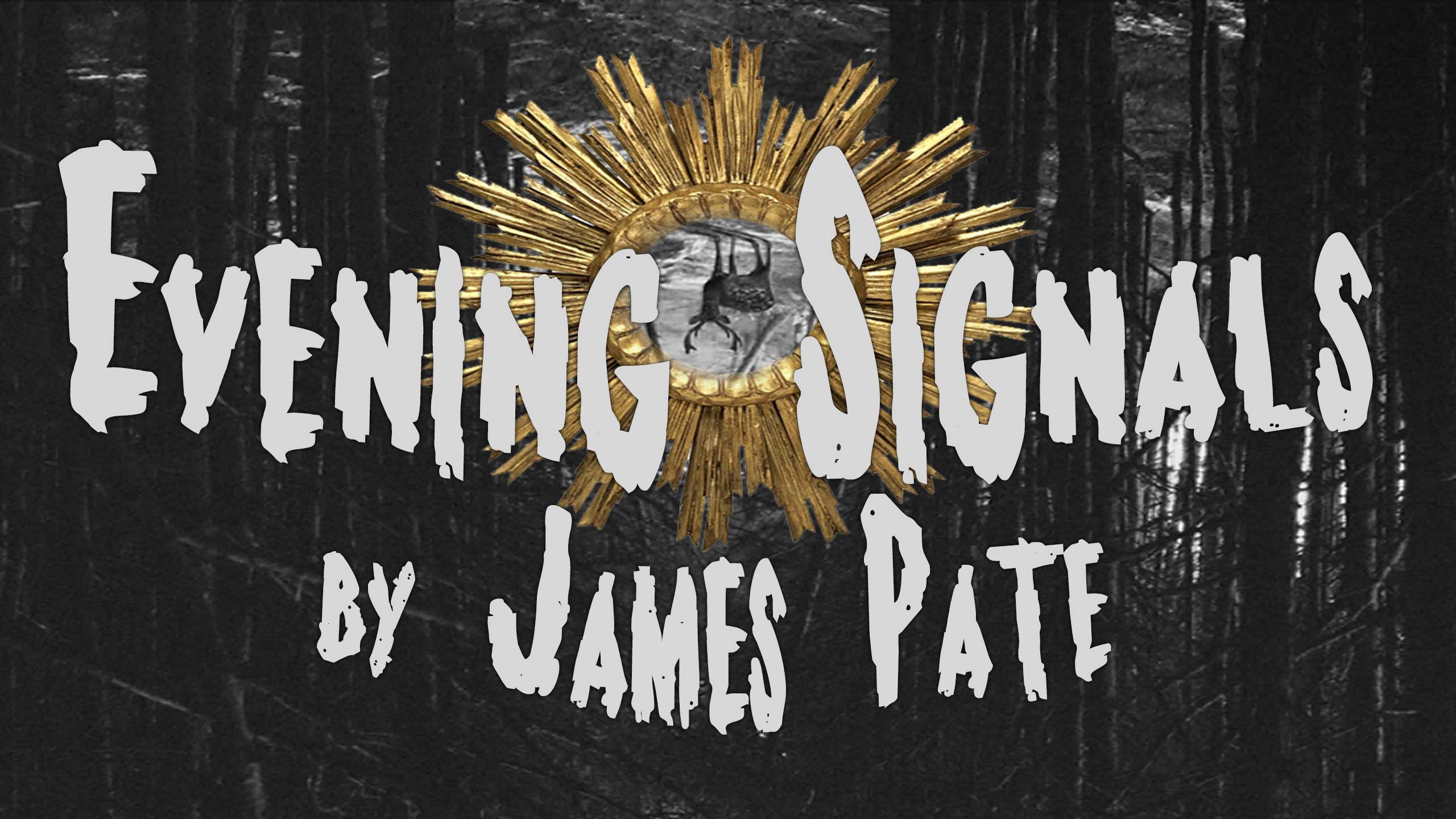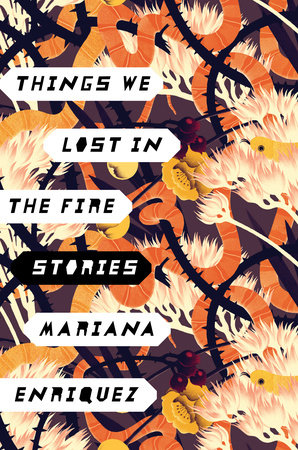Mariana Enriquez’s Things We Lost in the Fire
Evening Signals is a monthly column by James Pate, exploring the Baroque, the Gothic, the Weird and the Fantastique in contemporary poetry and fiction. This month’s column reflects on Mariana Enriquez’s Things We Lost in the Fire.

Mariana Enriquez’s Things We Lost in the Fire
Evening Signals is a monthly column by James Pate, exploring the Baroque, the Gothic, the Weird and the Fantastique in contemporary poetry and fiction. This month’s column reflects on Mariana Enriquez’s Things We Lost in the Fire.
“There’s something about the scale of the cruelty in political violence from the estate that always seems like the blackest magic to me. Like they have to satisfy some ravenous and ancient god that demands not only bodies but needs to be fed their suffering as well.”
— Mariana Enriquez, “On Political Violence and Writing Horror,” Interview with David Leo Rice
“But I know that girl wasn’t anyone’s daughter.”
— Mariana Enriquez, “The Intoxicated Years”
Argentinian writer Mariana Enriquez’s Things We Lost in the Fire, vividly translated by Megan McDowell, is one of my favorite short story collections from the past decade.[1] In the States, the book was marketed as being in the same vein as Roberto Bolaño’s work, but I think this comparison was due more for branding purposes than for any deep-set similarity. (For many years, it seemed like every book from a South American writer published in translation here in the States was compared to Bolaño’s books, just as, in the 80s, every new South American novel-in-translation was seemingly compared to García Márquez’s stories.) Bolaño certainly had a macabre side — “The Return” is a prime example, though there are many others — but Enriquez’s stories are closer to out-right horror. And horror both as a genre as an emotion. If some horror-as-a-genre is primarily about trying to creep out the reader, Enriquez’s stories do that, but, like the best of horror, her work takes it one step further. Her stories deal with trauma and open emotional wounds both historical and psychological. The years of the military dictatorship and “dirty war” haunt some of the stories (especially “The Inn”), and the violence of class division and sexism are threaded through many of the other tales (including the most well-known of the stories, “The Dirty Kid”). These tales are about trauma, but they’re also traumatic reading experiences themselves. They’re very much an example of Kafka’s belief that a book should “grieve us deeply” and be an axe to break up the frozen seas within us.

A major motif in the collection is psychic embodiment, the sense that the mental anguish and anxieties of a character are somehow creating effects in the “real world.” The Gothic is steeped in this blurring of inner world and outer reality, and stories such as James’ The Turn of the Screw implicitly ask the question, “Is this supernatural phenomenon real, or is it simply in the character’s head?” The stories in Things We Lost in the Fire, specifically, are less about asking the true reality of otherworldly occurrences, since it’s often clear that these events are really happening in Enriquez’s fiction, and more about exploring how a character’s guilt or anguish or fear are manifesting themselves materially in the human world. In this way, her stories share a surprising kinship with some of David Cronenberg’s films.
“The Neighbor’s Courtyard” might be the most explicit example of this embodiment. Paula has moved into a new house in Buenos Aires with her husband in the hopes of starting a new life. As we learn during the course of the story, Paula had been a social worker in a children’s shelter, but had been fired when a supervisor found her drunk and high at work, and unaware that an injured child in her care had been screaming for help. Paula plunges into a leaden depression, and is filled with self-hatred (“She deserved contempt. She had acted irresponsibly, like a cynic, like a brute.”). Her husband, despite staying with her, seems to regard her with disdain as well. Enriquez writes, “He didn’t want to have sex with her, he didn’t want to have children with her, he didn’t know what she was capable of.” The move to a swiftly gentrifying neighborhood is an act of hoped-for renewal. But Paula quickly realizes strange, nightmarish events are unfolding next door. She sees, or thinks she sees (she herself sometimes has doubts) a child chained up in the courtyard. A child who appears to be suffering from extreme abuse. She tries to help, going so far as to break into the neighbor’s house. But instead of helping the child, she finds an empty house full of disturbing details (a pantry strewn with raw meat, for instance – meat that could be either from an animal or a human).
In the last paragraphs, she does finally encounter the child, but it’s clear this isn’t a child of our world. Enriquez never directly tells us, but he seems to be an embodiment of Paula’s profound sense of guilt, and, as such, this being has come to wreck her new life. And this isn’t a case of Paula simply imagining the child. The story ends with the lines, “But she wasn’t dreaming. You don’t feel pain in dreams.” It’s important to note, of course, that Enriquez isn’t demonizing the street children. In her stories, she continually directs the reader’s sympathies to the poor and dispossessed, and to the children of the poor in particular. Rather, this nightmarish being is born of Paula’s guilt and pain – a guilt and pain that transforms from the mental to the material. Here, as in many stories in the Gothic mode, the literal and symbolic collapse into one another, implying that the real is folded into the imagined, and vice versa.
Similarly, in “The Inn,” two friends – two teenage girls on the cusp of a romantic relationship – break into an inn in order to carry out a bizarre prank due to the father of one of the girls recently being fired from his job as a tour guide. The inn had once been a police academy during the time of “the dirty war,” and he had made the mistake of telling tourists this information. As the girls move through the rooms, the romantic bond between them strengthens. Just as they are about to lay down to take a break from their mischief, the ghost police of this no-longer-existing academy come after them, the girls’ fear of having their same-sex romance discovered and ridiculed by friends and family seemingly made manifest by these military specters from the past. As with “The Neighbor’s Courtyard,” these otherworldly manifestations aren’t just in their heads. Both girls see and hear the attack. For them, “the dirty war” might be in the past, but it can erupt back into the present at any moment, suggesting that any step outside of the conservative, heteronormative moral code endorsed by the now-dead dictatorship is a dangerous one. (Enriquez’s female characters are not easily scared, and the end of the story implies that the main character will continue to follow her romantic interests, no matter what the military ghosts – or even her own family – might say.)
Not all of the stories deal with the otherworldly – though these are also in the horror vein. “The Dirty Child” is about a woman living in a grand, inherited house in the barrio of Constitución, which in the story is described as an impoverished and frequently dangerous neighborhood. The narrator enjoys living there because “it makes me feel sharp and audacious, on my toes.” She has a romanticized vision of the poverty. The area, she says, “isn’t easy, but it’s beautiful: all those once-luxurious alcoves, like abandoned temples now occupied by unbelievers who don’t even know that inside those walls hymns to old gods once rang out.” Two events collide to disrupt her exoticized picture of the barrio: she is almost attacked by the mother of “the dirty kid” one night after she has taken care of him, and a death cult that involves horrific acts of murder seems to be on the rise. Both events unnerve the narrator to the point where she commits an act of surprising aggression herself. The aesthetic distance through which she viewed the poverty, desperation, and crime around her withers away. She tells us near the close of the story, “Maybe I wasn’t the princess in her castle; maybe I was a madwoman locked in her tower.” As with “The Neighbor’s Courtyard,” a character who imagines that they’ve failed to help a child in desperate need is tormented by that failure. Importantly, in neither story is there a parent/child dynamic. The existential rift here is due to class issues, not family issues.
Arguably, the most intense narrative in this very intense collection is the title story “Things We Lost in the Fire.” It is about a series of sickeningly hideous attacks against women carried out through the country, eventually leading some women to decide that the only answer to this violence is to severely burn themselves, and by doing so making the men frightened enough to leave them alone. As one character explains, “Burnings are the work of men. They have always burned us. Now we are burning ourselves. But we’re not going to die; we’re going to flaunt our scars.” The burnings themselves take on a ritualistic element, which lends the story a folk horror undercurrent. (In fact, many of the stories in the collection have a folk horror aspect, though they mostly take place in cities and not the countryside.) One of the self-burnings is videotaped, and then watched online by millions of viewers.
It’s unclear if the reader is meant to see these burnings as a form of ultimate political resistance, or as an act of interiorized misogyny. Or a little of both. Silvina, the protagonist, is both fascinated and repulsed by the activity. She thinks, “Since when did people have a right to burn themselves alive?” And yet she is also the one to volunteer to videotape a ceremony. The last lines of “Things We Lost in the Fire,” which imply that an older generation (including Silvina’s mother) might begin to apply pressure on the younger generation to go through the ceremony, only complicates the story further.
Enriquez doesn’t let the reader off lightly, in this or in any of the other tales. In some writer’s hands, the violence in these narratives would be more implied than described, but Enriquez’s work is relentlessly visceral. Her collection isn’t “tasteful” by the standards of most U.S. literary fiction. But the power of her stories comes from this unflinching aesthetic, this ability to peer at the traumas of history, the traumas of misogyny, the traumas of class oppression, and follow how these traumas give rise to the most personal of hauntings and embodiments. The nightmares in Enriquez’s book are simultaneously intimate and collective, fires burning from the same source.
[1] Thanks to Gonzalo Baeza, for first telling me about the collection.

About the Author
James Pate teaches creative writing, literature and philosophy at Shepherd University. His books include The Fassbinder Diaries (CCM, 2013), and Flowers Among the Carrion (Action Book Salvo Series, 2016). His work has appeared in 3:AM Magazine, Black Warrior Review, Burning House Press, Blue Mesa Review, Berkeley Fiction Review, and Occulum, among other places.

About the Author
James Pate teaches creative writing, literature and philosophy at Shepherd University. His books include The Fassbinder Diaries (CCM, 2013), and Flowers Among the Carrion (Action Book Salvo Series, 2016). His work has appeared in 3:AM Magazine, Black Warrior Review, Burning House Press, Blue Mesa Review, Berkeley Fiction Review, and Occulum, among other places.